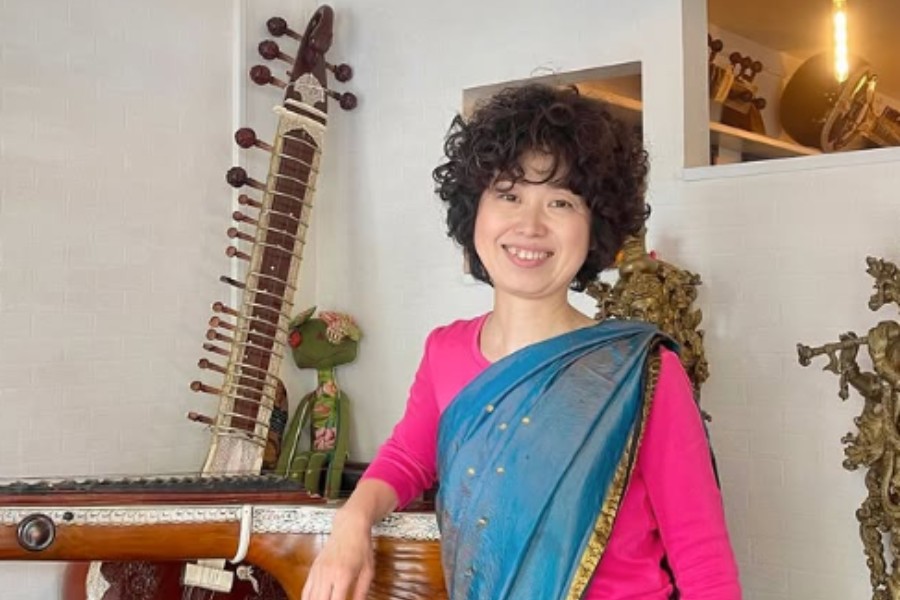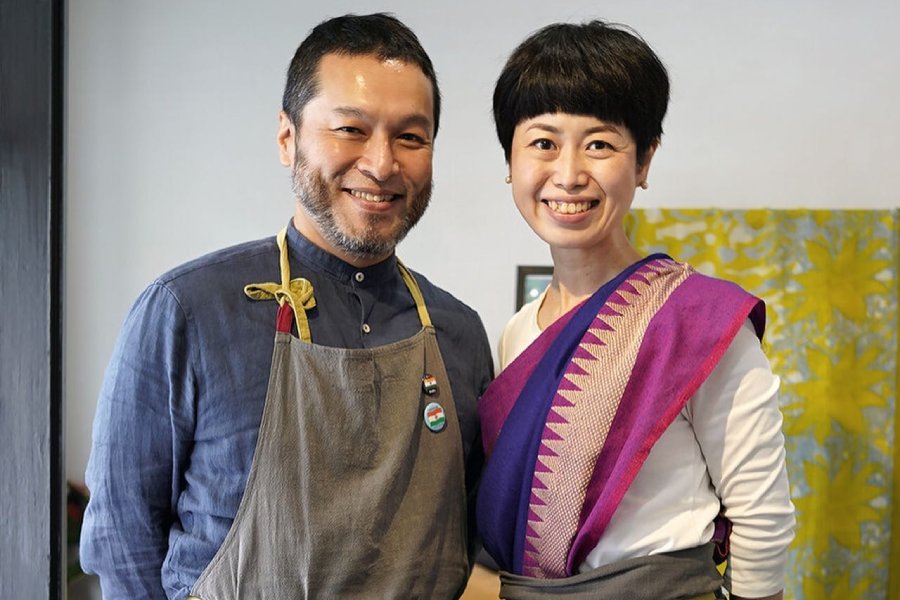Thousands of miles away from Kolkata, the aromas of shorshe maach and steaming rice waft through a quiet lane in Fukuoka, Japan.
At the Indian Spice Factory, a restaurant run by a Japanese couple, authentic Bengali meals are served on banana leaves, and even vegetables unique to India are freshly grown locally to offer the perfect Bengali taste.
Opened by Koji and Sachiko Nakayama in 2018, this restaurant is a love letter to Kolkata, the city that gave them more than just memories. Impressed by the city’s warmth, people and its cuisine, they now recreate the flavours of Bengal for Japanese diners and Bengali visitors.
In a freewheeling chat with My Kolkata, the Nakayamas took us through their culinary journey and their vision for the future.
For Koji, a seasoned Japanese chef, the story began in 2013, when he moved to Kolkata to help set up a Japanese restaurant. What began as a job assignment soon turned into inspiration for opening a restaurant in the years to come.
“Life in Kolkata was fulfilling as every day was fresh and the people around me were very warm and welcoming,” Koji recalled.
“Of course, business was difficult at times in Kolkata due to the difference between Bengali and Japanese culture and even moments when people duped me. But more than that, life in Kolkata enriched me and I was constantly making new discoveries and learning new things,” he said.

A Bengali thali served at Indian Spice Restaurant Instagram/ @indian_spice_factory
One such discovery that led Koji on a culinary exploration was Bengali cuisine. The restaurateur was instantly reminded of Japanese food habits after noticing the use of varied spices, the perfect balance of meat, seafood and vegetables, and the household culture built around rice and fish in Kolkata.
Shorshe Maach was the first Bengali dish that Koji tasted in Kolkata, a vivid memory that he still remembers today. “Despite its simple cooking method — marinating fish in spices, stir-frying it in a pan, and simmering it in a mustard-based sauce — this dish achieves a robust and complex flavour,” he said.

A preparation of Shorshe Maach at the Fukuoka restaurant Instagram/ @indian_spice_factory
In 2018, the Nakayamas opened their restaurant in Fukuoka, aiming to introduce the taste of Bengal to Japanese diners. Koji and Sachiko even began farming vegetables unique to India in Japan.
“It was only natural that we wanted to present correct Bengali and Kolkata cuisine,” says Koji. “But since we were born Japanese, we decided to specialise in Bengali cuisine using ingredients unique to Japan,” he added.

The Nakayamas hosting visitors from Mumbai Instagram/ @indian_spice_factory
Once a dedicated Spanish chef, Koji’s wife, Sachiko, is now an expert in Bengali cuisine. She even dons vibrant saris every day at the restaurant to make the dining experience more authentic for customers.
“I discovered interesting and unique use of spices in India, particularly in the Bengal region,” Sachiko said, elaborating on the reason she chose to specialise in Bengali cuisine. One of the Bengali dishes that was particularly difficult to recreate in Japan was Mocha’r Ghonto, she said.

Sachiko wears sari everyday at the restaurant Instagram/ @indian_spice_factory
From shona moong dal to korola bhaja and pui shaag to biryani, Koji and Sachiko ensure that their visitors are transported to Kolkata at their restaurant. Apart from Bengali cuisine, they have also aced South Indian dishes like murukku and North Indian desserts like phirni.
The interior of their restaurant, too, has a Bong touch to it, adorned with earthen pots and Radha Krishna idols.
Besides their culinary journey, the couple have learnt to play the sitar and tabla, showcasing a love for Indian music as well. A quick glance at their Instagram page maps their musical journey — from taking professional classes to later teaching others.

The couple also showcases their love for Indian music Instagram/ @indian_spice_factory
Japanese diners, often expecting spicy Indian food, are surprised to discover the nuanced and delicate tastes of Bengali dishes. “They say, ‘It’s Indian cuisine, yet not as spicy as expected’,” Koji said with a smile.
Customers visiting the restaurant from Kolkata or Bangladesh are delighted, often leaving the restaurant with misty eyes after an elaborate meal. “The expats say that our food brings back memories from home,” he mentioned.
The Nakayamas see their restaurant as a bridge between Japanese and Bengali cuisine. “I would like to continue to tell people in Japan about East India, Kolkata, and Bengal — not only the cuisine, but also the culture,” Koji signed off.
